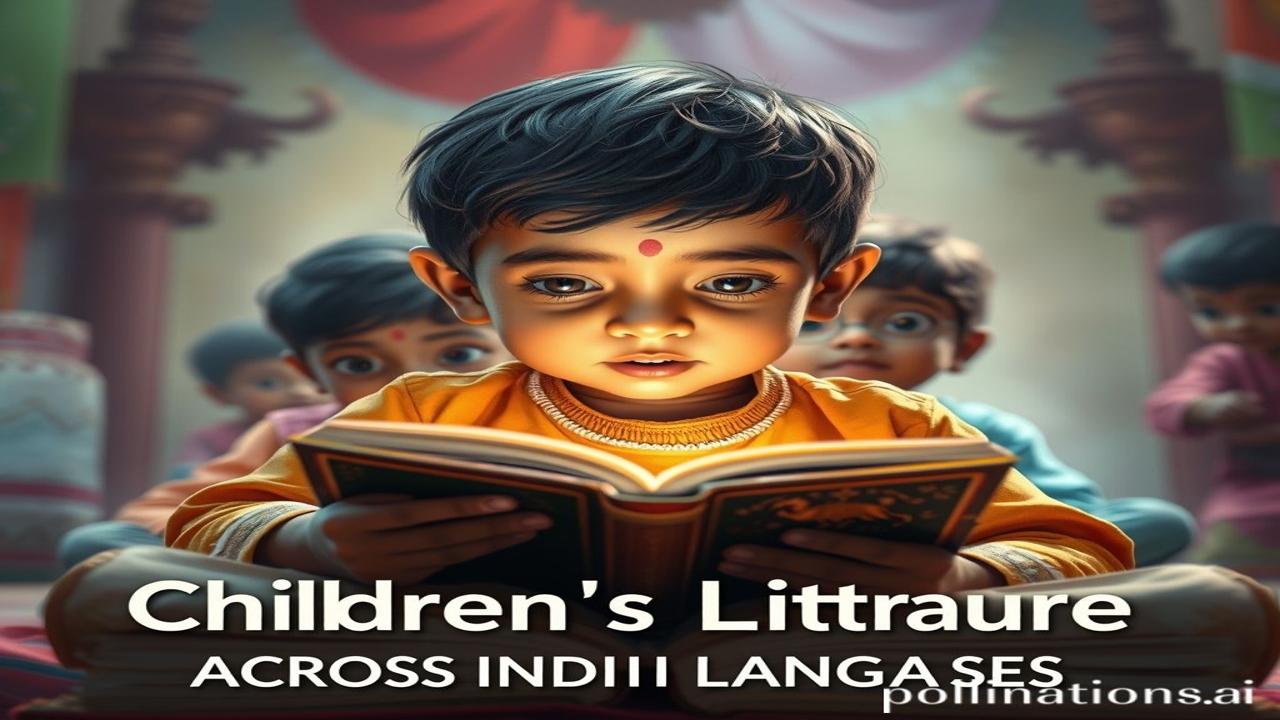Bachpan Ki Kitabon Ki Khushboo: Exploring Children’s Literature Across Indian Languages
Kabhi kisi purani almaari mein bachpan ki kitaaben dekhi hai? Woh sirf kagaz aur syaahi nahi hote. Unmein chhupi hoti hai woh khushboo, woh aawazein, woh sapne jo humne dekhe the… Unmein jeeta hai hamara bachpan, alag-alag bhashaon mein rang bhara hua. Today, let’s embark on a journey through the vibrant world of children’s literature across Indian languages.
Bachche, Bhashayein Aur Kitaben: Ek Itihaas
Children’s literature, as a distinct genre, really took off in India during the late 19th and early 20th centuries. Before that, stories were primarily shared orally, passed down through generations of grandparents and storytellers. Think of the Panchatantra and Jataka Tales – ancient collections brimming with moral lessons cleverly disguised as animal fables. These weren’t specifically “children’s literature” as we know it, but they certainly entertained and educated young minds.
The advent of printing presses and a growing nationalist sentiment led to a surge in writing specifically for children, in various Indian languages. This was a time of social reform, and many writers saw children’s literature as a powerful tool to instill values of patriotism, social justice, and cultural pride. This is why this literature is a part of our dharohar and why it’s important.
Zameeni Sach: Lekhak, Bachche, Aur Kahaniyan
Imagine a young Rabindranath Tagore, penning poems and stories for the children in Shantiniketan. Picture him, surrounded by eager faces, his words painting vivid images of rural Bengal. Or visualise Munshi Premchand, weaving tales of village life, highlighting the joys and struggles of ordinary folk – stories that resonated deeply with children from all walks of life.
These writers weren’t just creating entertainment; they were shaping young minds. Their stories offered glimpses into different cultures, different ways of life, fostering empathy and understanding. They introduced concepts of nationalism and social responsibility through engaging narratives.
“Beta, yeh mat bhoolna ki tum Bharat ke bhavishya ho. Tumhe iski raksha karni hai,” one character might say in a story, planting a seed of patriotism in the young reader’s heart.
Dharohar Aur Pehchan: Aaj Kal Ki Baat
Today, children’s literature in Indian languages is more diverse and exciting than ever. From graphic novels to picture books, from science fiction to historical fiction, the range of genres and themes is constantly expanding. We see authors tackling contemporary issues like climate change, gender equality, and mental health in ways that are accessible and engaging for young readers.
The spirit of Bharatiyata continues to resonate. Stories celebrate the richness of our cultural heritage, promote values of compassion and respect, and encourage children to embrace their identity. And with renewed focus on regional literature, more children now have access to literature in their own native languages.
Mazedar Tathya: The “Foreign” Influence
Log samajhte hain ki Indian children’s literature poori tarah se Indian hai, lekin, asli sach yeh hai ki many early writers were heavily influenced by Western literary traditions. They adapted Western fairy tales and folklores, but often infused them with local flavor and moral lessons. For example, stories like Cinderella and Little Red Riding Hood were re-imagined with Indian settings and characters, making them more relatable for Indian children.
Drishya Aur Bhavnayein: Kitabon Mein Kho Jana
Imagine yourself sitting under a mango tree, the air thick with the scent of jasmine. The afternoon sun filters through the leaves, casting dappled shadows on the pages of your book. The rhythmic chanting from the nearby temple blends with the chirping of crickets. The story transports you to a faraway land, filled with brave warriors, mischievous monkeys, and wise old sages. The touch of the worn-out cover against your fingers, and the smell of old paper takes you back.
That’s the power of children’s literature – it creates a sensory experience that stays with you long after you’ve finished reading.
Antim Vichar: A Poem for the Future
Bhashaon ke rang, kahaniyon ki roshni,
Bachpan ki aankhon mein, ek naya jahan bani.
(The colors of languages, the light of stories,
In the eyes of childhood, a new world is born.)
Let us continue to celebrate and nurture children’s literature in all its forms, ensuring that every child has the opportunity to experience the magic of stories and the power of imagination. Let us make sure every kid enjoys their childhood, and their culture through these amazing pieces of art.
